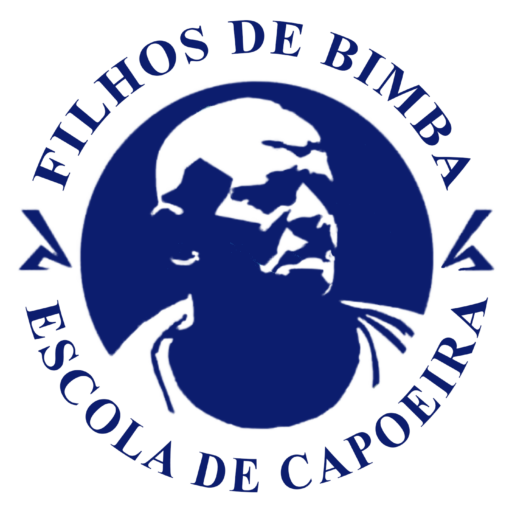Mestre Bimba
 Manoel dos Reis Machado, Mestre Bimba was born November 23, 1899, in Salvador, Bahia, a bit more than a decade after the abolition of slavery. Son of Luís Cândido Machado, a famous champion of batuque from Bahia, and Maria Martinha do Bomfim.
Manoel dos Reis Machado, Mestre Bimba was born November 23, 1899, in Salvador, Bahia, a bit more than a decade after the abolition of slavery. Son of Luís Cândido Machado, a famous champion of batuque from Bahia, and Maria Martinha do Bomfim.
He worked with charcoal, in the docks, as a carpenter, but mainly worked with Capoeira. His Status of Mestre of Capoeira was acquired through popular recognition and respect from society at a time when the persecution of the manifestations of the Black culture was very intense and perverse. Mestre Bimba was to become one of the most well-known and revered men in Bahia.
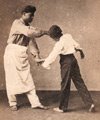
At the age of twelve, Bimba began practicing Capoeira in a time when it was seen as a lower-class activity, because it originated from manifestations of the African people enslaved in Brazil. His teacher was the African Nozinho Bento, known as Bentinho, Captain of the Bahian Navigation Company.
Due to the intense persecution that capoeira practitioners experienced, it became obvious to Bimba that the art form was dying. As it was becoming increasingly folkloric, it was also losing its original fighting aspect. A man ahead of his time, Bimba envisioned a renewed capoeira and on September 7, 1918, he set out to make these changes, transforming the old capoeira into what he called Luta Regional Baiana, the Regional Fight of Bahia.
Drawing from his skills in the old capoeira and in Batuque (which he learned from his father), Bimba created his capoeira, believing strongly that it could become a respectable as the other martial art. In 1932, Mestre Bimba founded the first capoeira academy. He wanted to show it to all the segments of the society in Bahia; He was determined to rescue Capoeira from persecution and extinction. He decided to fight, challenging the most important fighters at the time and Bimba defeated them all!
On June 9, 1937, Bimba officially registered his capoeira school with the Secretary of Education, Health and Public Services – his became the first legitimate academy of capoeira in Brazil. Bimba eventually taught capoeira in the military, and then, in 1942, he opened his second academy.
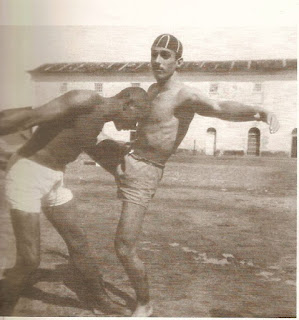
It was on July 23, 1953, when President Getúlio Vargas watched a capoeira presentation at the Palace of Acclamation and declared it – “Brazil’s true national sport” – and Bimba’s capoeira entered a new phase. Mestre Bimba’s capoeira quickly gained notoriety – he had his share of critics, many of them from the older practitioners of capoeira who criticized Bimba’s creative initiatives. He was denounced as having “whitened” the art of capoeira and thus betrayed its past. Ironically, Mestre Bimba was well-versed in Afro-Bahian culture, having drummed in the Afro-Brazilian Candomblé houses for many years and having married a mãe de santos, the head of a Terreiro. He revived many of the folkloric dances that were being left by the wayside, such as maculêlê, puxada de rede and samba de roda, taking pride in the Afro-Bahian heritage and presenting them to a middle and upper class public for the first time. Today, almost every academy practices one of these art forms and presentations are common, thanks to Bimba’s efforts.
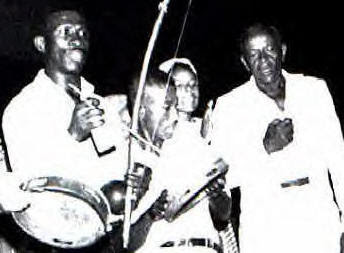 A gifted berimbau player – some say one of the best in Bahia – Bimba stressed the importance of music in capoeira, both in the creation of the roda and in the games themselves. The move away from music in modern day capoeira (often referred to as Regional, but more accurately described as a Contemporary style) is a consequence of the changes brought about by some of Bimba’s students and their descendants, and does not reflect his own philosophy.
A gifted berimbau player – some say one of the best in Bahia – Bimba stressed the importance of music in capoeira, both in the creation of the roda and in the games themselves. The move away from music in modern day capoeira (often referred to as Regional, but more accurately described as a Contemporary style) is a consequence of the changes brought about by some of Bimba’s students and their descendants, and does not reflect his own philosophy.
Thanks to Mestre Bimba, capoeira took off in Bahia and eventually expanded to the rest of Brazil, where it had been erased through persecution. The old form of capoeira also benefited from Bimba’s work, as it forced its old adepts to come together and to attempt to redefine, organize and modify their art from. The term “Capoeira Angola” began to be used, replacing the more common terms “Vadiacao,” “Brincadeira de Angola,” or simply “Capoeira.”
In 1973, Mestre Bimba moved with his entire family to the state of Goiás, a very controversial decision, and one which he took in bitterness, feeling that the authorities in the state of Bahia did not recognize the worth of his work. Sadly, his expectations in Goiás were not met and he and his family struggled with poverty. Mestre Bimba died of a stroke on Feburary 5, 1974, undoubtedly brought on by his great sadness. He was buried in Goiânia. In 1978 his remains were transferred from Goiânia to Salvador where they currently reside in the church of Santo Antonio Alem do carmo.
Bimba managed to recover the original values within capoeira, which were used amongst the enslaved Blacks, centuries before him. For Bimba, capoeira was a fight but “competition” should be permanently avoided since he believed it was a “cooperation” fight, where the stronger player was always responsible for the weaker player and helped him to excel in his own fighting techniques.
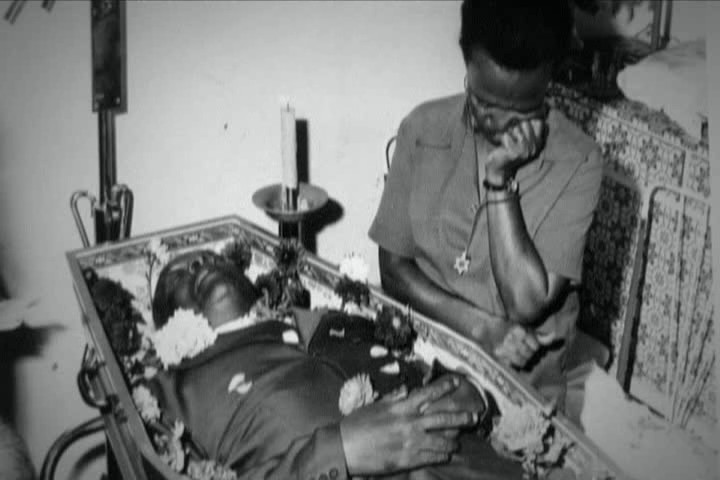 Machado fought in favor of education, citizenship and social inclusion, using the Capoeira Regional as the main tool to achieve his goals. After Bimba’s death in 1974 one of his sons, “Nenel” (Manoel Nascimento Machado) later moved to back to Bahia and eventually took over his father’s capoeira legacy. Nenel is still responsible for the remarkable cultural and historical legacy his father left him and is president of Filhos de Bimba School of Capoeira.
Machado fought in favor of education, citizenship and social inclusion, using the Capoeira Regional as the main tool to achieve his goals. After Bimba’s death in 1974 one of his sons, “Nenel” (Manoel Nascimento Machado) later moved to back to Bahia and eventually took over his father’s capoeira legacy. Nenel is still responsible for the remarkable cultural and historical legacy his father left him and is president of Filhos de Bimba School of Capoeira.
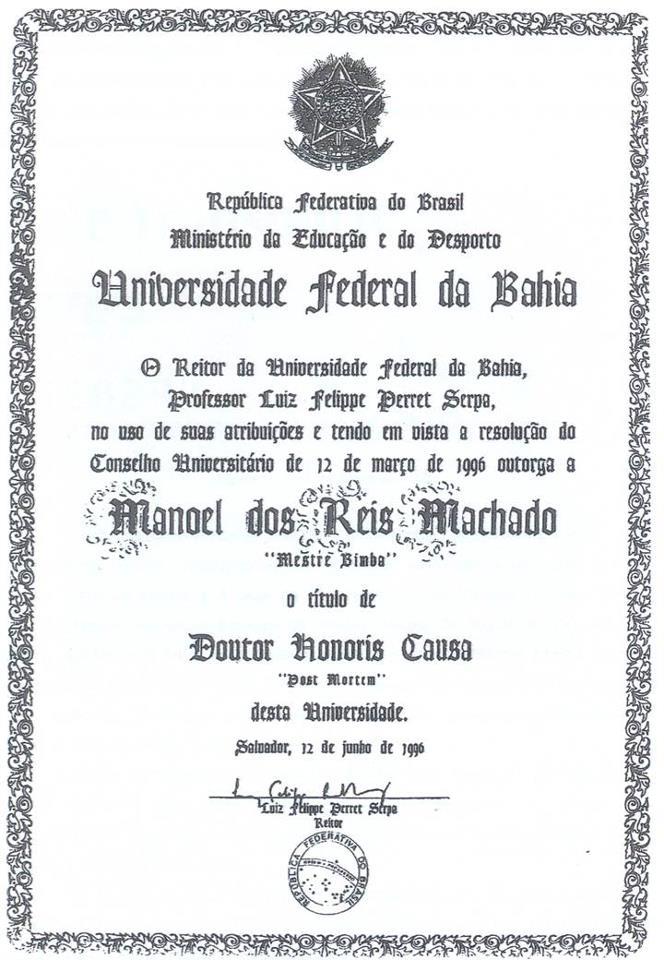 Mestre Bimba Doctor Honoris Causa
Mestre Bimba Doctor Honoris Causa
The Federal University of Bahia (UFBA) granted, on June 12, 1996, the title of Doctor Honorius Cause (post-mortem) to Manoel dos Reis Machado, Mestre Bimba, in recognition to his value as an educator, a personality from Bahia who by extrapolating the Capoeira, contributed significantly to expand the culture of Bahia in the national and international scenes.
